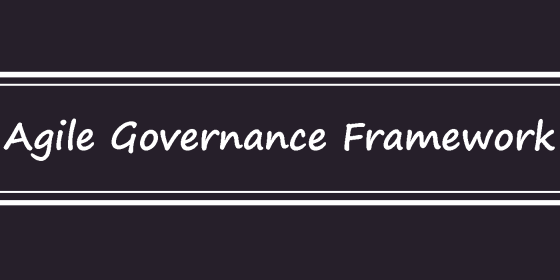Agile Governance Framework

An Agile Governance Framework is a set of guidelines, practices, and processes designed to govern Agile projects, initiatives, and organizations effectively. It provides a structured approach to decision-making, risk management, and performance measurement in Agile environments, ensuring that Agile principles are aligned with organizational goals and objectives.
Key aspects of an Agile Governance Framework include:
- Value-Oriented Decision-Making: The framework focuses on delivering value to customers and stakeholders, guiding decisions that align with strategic objectives.
- Adaptive Governance: Agile Governance is flexible and adaptable, allowing for real-time adjustments based on changing conditions and priorities.
- Transparent Communication: The framework emphasizes transparency and open communication between stakeholders, fostering trust and accountability.
- Collaborative Governance: Agile Governance involves collaboration between different levels of the organization, including leadership, teams, and customers.
- Clear Roles and Responsibilities: The framework defines roles and responsibilities to ensure clear accountability and ownership.
- Risk Management: Agile Governance includes processes for identifying, assessing, and responding to risks in Agile projects and initiatives.
- Performance Measurement and Metrics: The framework establishes relevant metrics and performance indicators to assess the success and effectiveness of Agile initiatives.
- Agile Project Prioritization: Processes for prioritizing Agile projects and initiatives based on their value and alignment with strategic goals.
- Continuous Improvement: Agile Governance supports a culture of continuous improvement, enabling organizations to learn from experiences and optimize their Agile practices.
- Compliance and Legal Considerations: The framework addresses compliance and legal requirements, ensuring that Agile practices adhere to relevant regulations and standards.
An Agile Governance Framework is crucial for organizations embracing Agile methodologies, as it ensures that Agile initiatives are aligned with broader business objectives and that governance practices support Agile ways of working. It enables organizations to strike the right balance between autonomy and control, providing the necessary structure while allowing Agile teams to be innovative and responsive.
Implementing an Agile Governance Framework requires collaboration between various stakeholders, including executives, managers, Agile teams, and customers. It requires a deep understanding of Agile principles and practices to develop governance mechanisms that support Agile values and foster a culture of continuous improvement and value delivery.